A Guide to Tamales: Unwrapping Their History & Ingredients
- October 2021
- By Emilly Olivares
- Recipe from Everywhere Latino
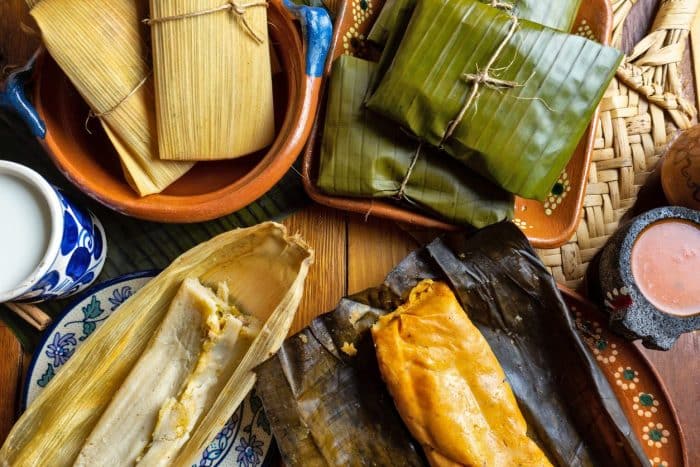
This guide to tamales celebrates a beautifully wrapped Latino culinary tesoro that has survived the truest test of all: time. Its name comes from the Aztec Nahuatl word tamalli for “pan de maiz envuelto” or “wrapped corn bread.” Delicious, filling and as prized today as they were by our Mesoamerican ancestors, tamales are one of defining dishes in comida Latina. In Mexico alone, there are more than 500 types of tamales, with a fascinating range of ingredients and preparation methods extending across the rest of Latin America and the Caribbean.
Most recipes follow the same three-part formula: savory meat filling + corn-based dough (usually made from masa harina) + corn husk or banana leaf wrapping—as you will see in this Familia Kitchen tribute to these masa-stuffed wonders from so many of the Spanish-speaking places we come from.
El Primer Tamal
The history of the tamal begins about 9,000 years ago, when corn was first domesticated in Mexico (interested in more on the history of maíz in Mexico? We dig into that here). At the center of Mesoamerican civilization, we find corn, and if you look a little closer, you’ll see the sacred bond that its ancient cultures created between their dioses and this beloved dish.
Mesoamerica’s Olmecs, Mayans, Aztecs, and Incas have more in common than their reliance on corn for sustenance. They all also worshipped a maize deity (among hundreds of other gods and goddesses). In studies of these indigenous cultures, archaeologists find the earliest visual and written accounts of the tamal, including the oldest Mayan mural to date. Thought to have been created around 100 B.C., it illustrates Mayan beliefs about human creation and stories from the Popol Vuh and the Dresden Codex (which includes the oldest Mayan text written in hieroglyphics!). The Popol Vuh is a Mayan text believed to have been written between 1554 and 1558 A.D. It explains their mythological deities, including the tale of how humans were created from maize. Scholars think that many of these beliefs were learned from the Olmecs, who were one of the first cultures to build cities and show their beliefs in their art.
A section of this historic Mayan mural, found in San Bartolo, Guatemala, shows a human bestowing the god of maize, Ah Mun, with a bowl of sacred tamales to honor the deity. Maybe that’s where the expression “holy tamales” came from?
Early Outsiders’ Take on the Tamal
Much of what we know about the making of early tamales is thanks to curious Spanish friar Bernardino de Sahagún’s Historia General de las Cosas de Nueva España, known as the Florentine Codex. His 16th-century historical text reports on the practices of the Mexicas, including detailed accounts of the preparation of new-to-him tamales and their significance in rituals and traditional celebrations.
Sahagún wrote that tamales are like: “panes redondos hechos de maiz, ni bien rollizos, ni bien redondos (“round breads made from maize, not too plump and not too round”).” His description supports the images we see of tamales in ancient paintings and murals. In these early depictions, despite what Sahagún writes, the tamal seems to be a bit rounder than what we see today; they’re also often covered in a sort of sauce.
Other accounts in The Florentine Codex tell of the rellenos or fillings made by the Mexica people. Popular Mesoamerican tamalli ingredients included turkey, frog meat, fish, rabbit, and squash. Sweet ones were made from native fruits like guava or mamey. Not too different from what we put in our tamales today, right? (With the notable exception of frog legs!)
The tamale was about to undergo big changes. Because: colonization. With the conquistadores’ ships, maps and misguided plans to convert the locals to Christianity came the introduction of never-seen-before ingredients. The Mexicas were soon introduced to pork, lard, olives and raisins. Spanish influence is also seen in changes to the tamale prep process—starting with the masa. Pre-Hispanic tamales were made only after the proper dough was achieved through the nixtamalization of corn. The resulting masa was the foundation of ancient and current tamales. The introduction of lard gave some tamale makers an excuse to skip the nutrition-enhancing process of nixtamalization, because it created masa that was smoother and easier to work with.
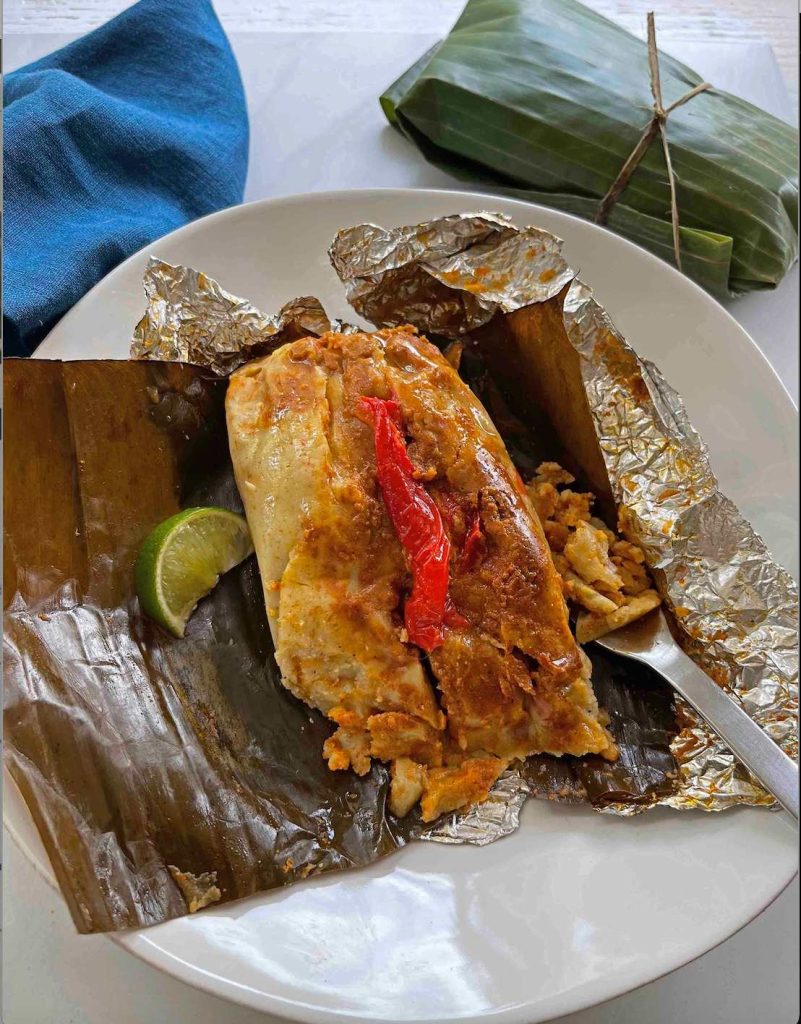
The tale of tamales’ evolution doesn’t end with the Spaniards. The dish traveled beyond north to Mesoamerican lands, in major cities across the United States, where they became a fought-over food. Literally.
How They Got to the U.S. & the Tamale Wars
In the late 1890s, U.S. cities were rapidly falling for and integrating this Mexican comida into their street food. In San Francisco, Spanish settlers known as Californios introduced tamales, which were soon sought out by the locals. “Tamale vendors canvassed the growing cities of the West, serving their wares out of kettles, carts, and wagons. Cries of ’Hot tamales!’ or ’Red-hot tamales!’ soon became part of the soundscape,” reports Atlas Obscura. In Chicago, at its famed 1893 World Fair, Mexican tamale vendors hoping to introduce “authentic Mexican comida” as a new food were scorned by the already well-established Californian tamale vendors.
In his great read, Taco USA: How Mexican Food Conquered America, journalist Gustavo Arellano (who stars in one of our favorite food shows Ugly Delicious—watch the taco episode in season 1!) details the rise and fall of the tamale “fad” in los Estados Unidos. Arrellano details how tamales spiked to popularity in metropolitan areas across the country, including San Francisco, Chicago, New York and San Antonio. It wasn’t until tamaleros from each city learned they weren’t the only ones in their local markets that they began to wage war over who made the best tamales and had the right to sell the most in their city. It got ugly: beatings, a shoot-out, and even murder ensued.
The Familia Kitchen Tamale Roundup:
Tamales, Pasteles, Hallacas, Humitas y Más
Tamales are still going strong 9,000 years later. You can find street vendors and restaurants across the U.S. selling savory or sweet tamales in just about every day in most ciudades.
For home cooks, though, it’s a different story. One thing every type of tamale, no matter its name or nationality, has in common is when they are made. Time-consuming tamales are typically prepared just one or two times a year by most families, to celebrate religious, festive and holiday traditions. Making them together continues to be a special tradition for Christmas, February’s Dia de la Candelaria and national feast days. Anther special time for this dish is when Mexican families gather for El Dia Del Muerto or Day of the Dead, and offer tamales as a special gift to honor their ancestors.
The far-reaching and enduring range of tamales’ regional variations served at our most important celebrations are edible proof of the power, reach and popularity of this essential Latin American food.
Here are some of our favorite ways to eat this stuffed-masa Latinx culinary gift to the world:
Tamales From Mexico
In Mexico and in Mexican households across el mundo, tamales are lovingly made over the course of two or three days to commemorate holidays and special occasions—like Christmas, weddings and September 16: Mexican Independence Day.
The Mexican Tamale—El Clásico
Classified by the color of its salsa—Would you like tamales verdes o rojos?—the traditional Mexican tamale is usually made with pork or beef and a sauce, then wrapped in a corn husk and steamed. Whether the receta calls for salsa verde or rojo, el chile is never excluded!

The Oaxacan Tamale
In southern Mexico, el tamal Oaxaqueño is not the corn husk-wrapped delicacy we usually see. This tamal’s masa is smothered in a signature mole negro and wrapped in a dark-green banana leaf.

Tamales de Rajas Con Queso
Savory corn tamales stuffed with chile and cheese are made by frying strips of jalapeño or serrano and typically cooked with tomato, onion, and the herb epazote. A signature ingredient: queso fresco de Oaxaca, which helps takes this tamal over the top. Delicioso.
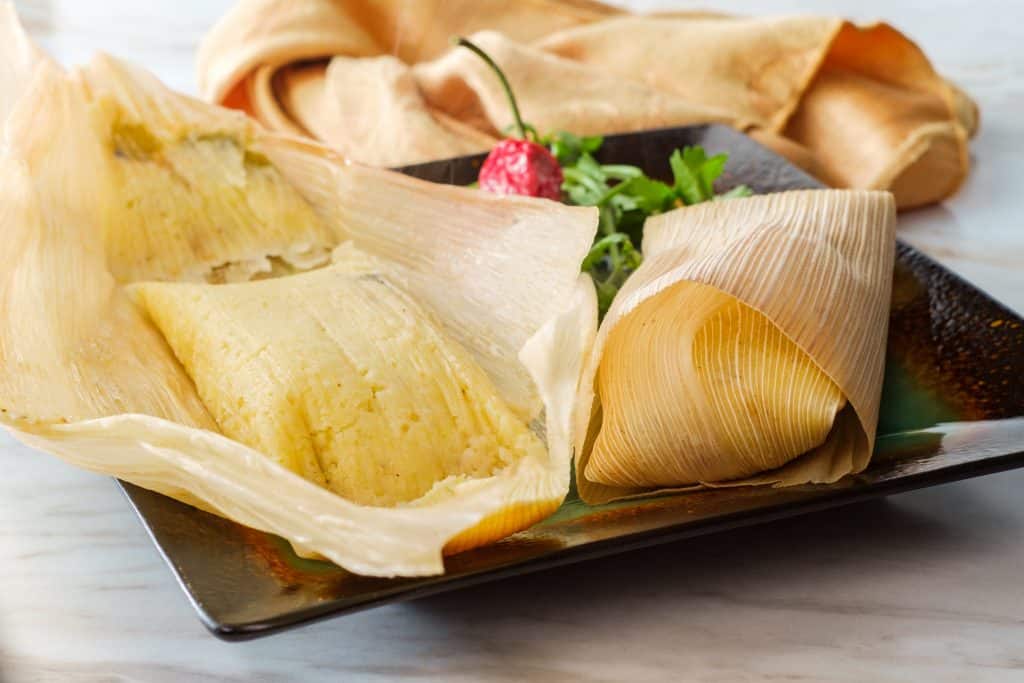
Tamales Dulces or Sweet Tamales
Tamales can also be dessert. Sweet tamales, or tamales dulces, are popular and usually filled with guava or pineapple. We especially love pretty tamales rositas: pink-hued guava with raisins.
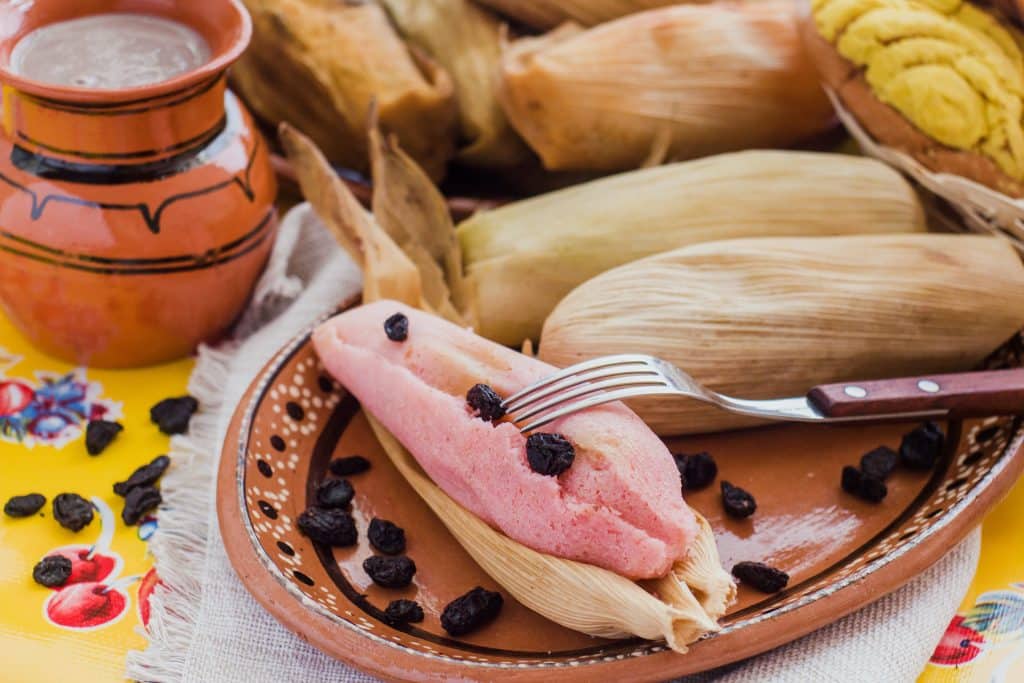
Hallacas From Venezuela
Making hallacas is a communal activity in Venezuela. Often the whole family joins in on the process—making the preparation faster and more enjoyable. This special dish is usually reserved for the holiday season, with relleno preparations starting one or two days before the official assembly of the festivities’ hallaca.
Corn masa is generously spread across a large banana leaf and then topped with a stew or guisado of shredded beef called carne mechada, seafood or chicken. It is then meticulously wrapped and tied with string before steaming. In addition to the filling, hallacas are stuffed with some combination of olives, raisins, bell peppers, onions, and even sometimes nuts and hard-boiled eggs!
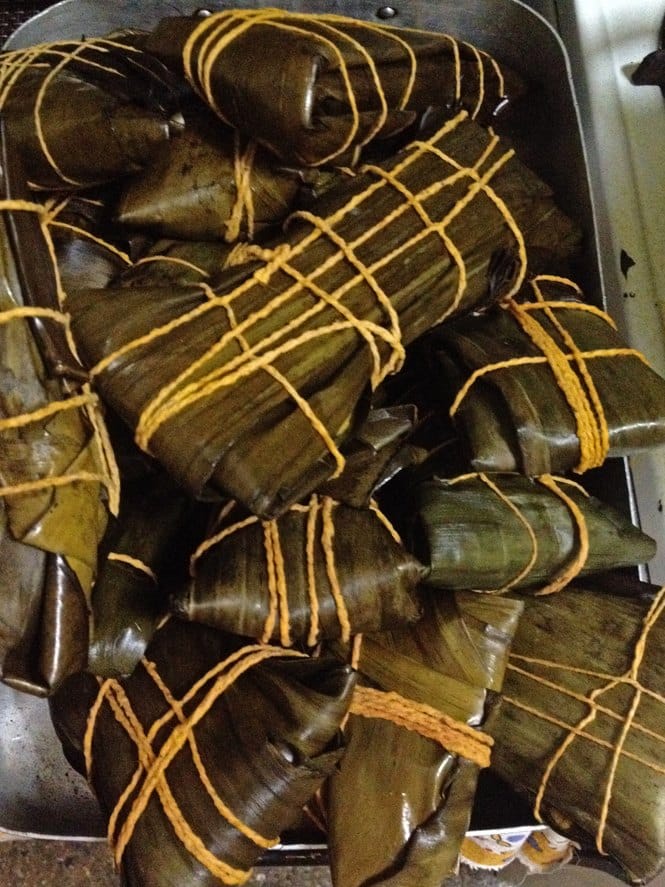
Humitas From Ecuador and Andean Regions
Humitas are what corn tamales are called in Ecuador and in certain Andean regions of Peru, Chile, Bolivia, and Argentina. While both tamales and humanitas use corn husks, the filling is made with fresh corn kernels, not nixtamalized and ground maíz. Ingredients also used in humitas and their rellenos can include cheese, butter, onion, garlic, cream, eggs, spices and herbs. Recipes and techniques, of course, vary from casa to casa, familia to familia. Interestingly, unlike tamales, humitas (or humintas, as they are called in some of the regions) are eaten for breakfast, lunch or any time of day and made regularly.

Nacatamales From Nicaragua
Nacatamales are a Nicaraguan traditional wrapped-masa dish enjoyed on Sunday mornings and during the holiday seasons of Christmas and New Year’s. Nacatamales are especially filling since their relleno looks like a full plate of dinner! Commonly used ingredients include rice, pork, potatoes, bell peppers, tomatoes, olives, onions, herbs and the spice achiote (made from anatto seeds), which gives nacatamales their distinguishable orange tinge. They are cooked in hojas de plátano or plantain leaves—also known as hojas de chagüite.
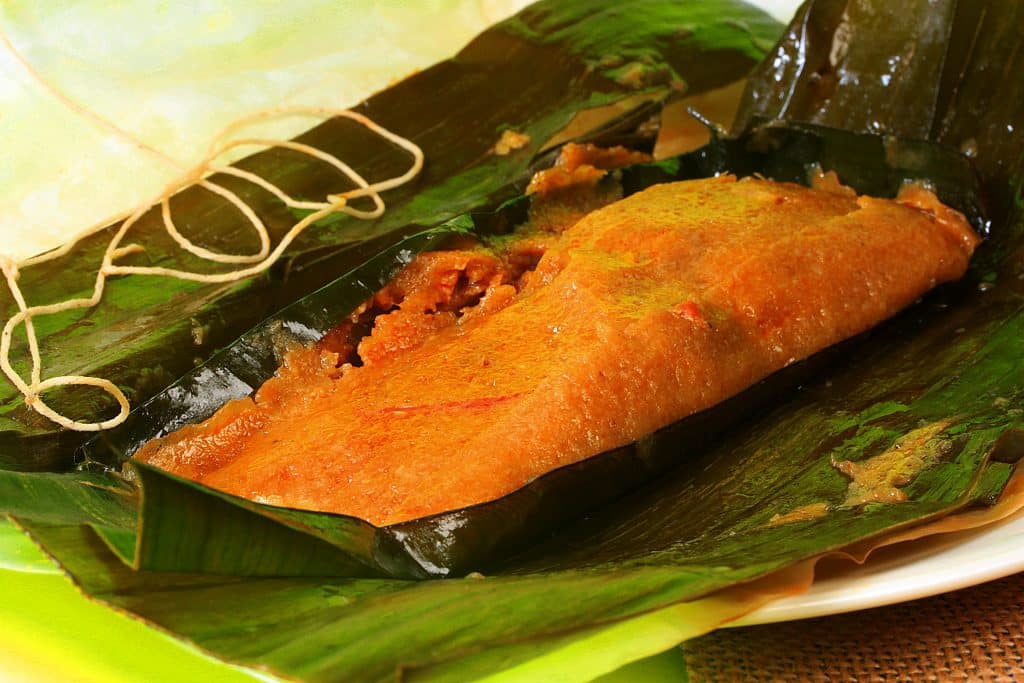
Pasteles From Puerto Rico and the Dominican Republic
Pasteles are a special meal in the Caribbean’s Puerto Rico and Dominican Republic. Their masa is typically made with grated green bananas, plantains, yautía (also known as malanga), and calabaza (kabocha squash). A few spoonfuls of homemade achiote oil, spices and sometimes milk are added to the masa. They are then wrapped in banana or plantain leaves and boiled.
Inside each string-tied leaf pastel package, the relleno typically includes a meat guisado made with spices, onions, garlic, pepper, herbs, cilantro, chopped olives, tomato, and tomato paste. (Sounds so good, right? If you’re hungry for this traditional treat, try this recipe for Puerto Rican pork pasteles, made with green bananas, plantains and yautía con achiote, by one of our favorite Puerto Rican food cocineras Michelle Ezratty Murphy and her Boricua husband Pat.)
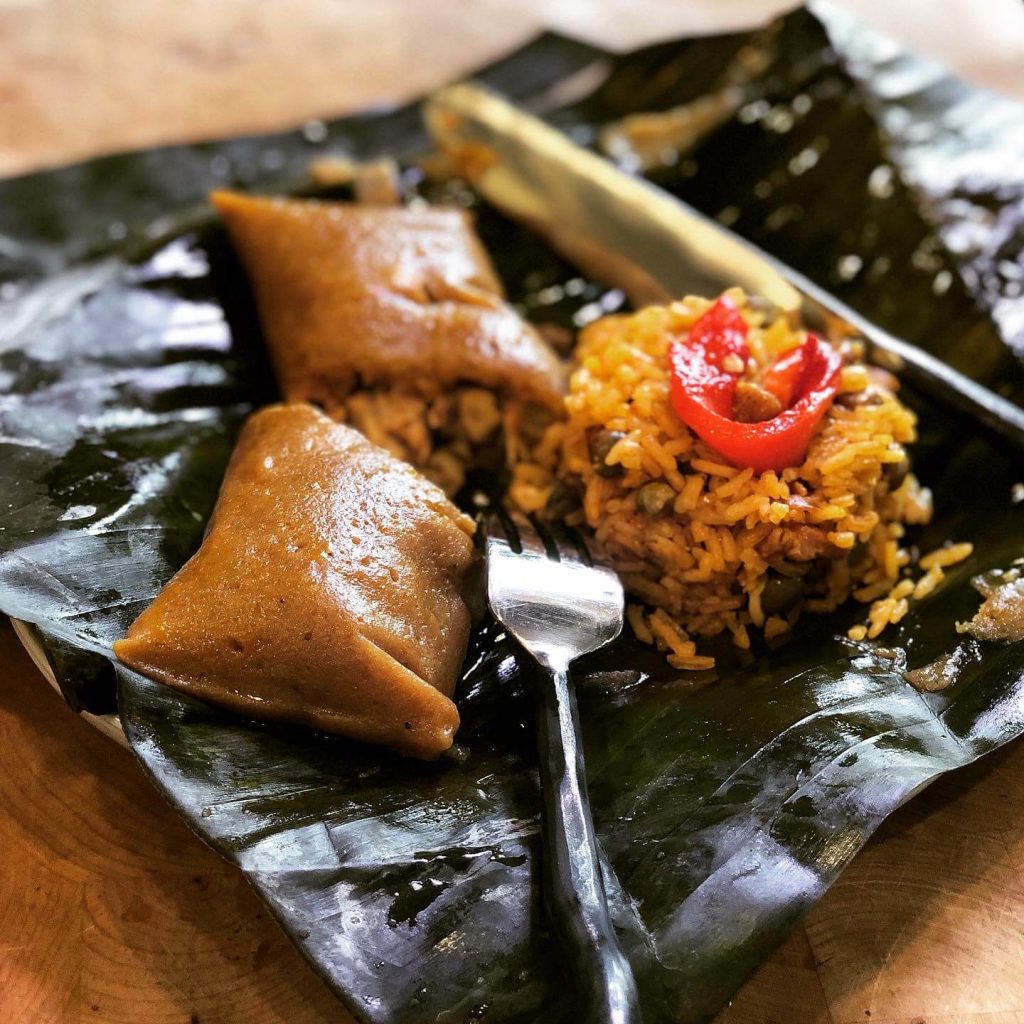
Tamales From Guatemala
Here we turn to one of our favorite cocineros Guatemaltecos Luis Yanes, who submitted one of the most popular recipes on Familia Kitchen: his family’s Guatemalan tamales. ”Our tamales have many layers,” Yanes explains. “Each has its own unique ingredients or plays a key role in the making of the tamale. The components are the masa (dough), the recado (sauce), a protein (pork or chicken are most popular), and a few diced vegetables. We put all of these ingredients together and then wrap each one in banana leaf and steam. That is the quintessential tamale! It’s easy to transport and full of calories to prepare you for the day.
“Growing up, we would eat them on special occasions, since they can take up to three days to prep and make. Christmas was the best time to make them since the family was all together already and more hands were readily available to help—in the prep and in eating them!”
You can find Luis’ authentic family recipe for Guatemalan tamales made with corn masa, pork relleno and banana leaf-wrapped tamales here. Buen provecho!
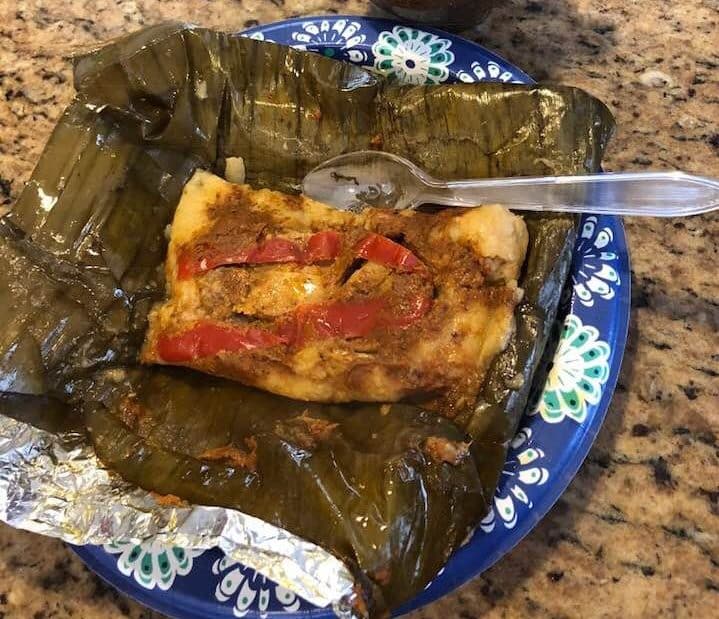
Tamal Tolimense From Colombia
The Colombian tamal Tolimense is traditionally made during Christmas, but can be enjoyed on special weekends as well. Tamal tolimenses tend to be larger than typical tamales, meaning more delicious relleno is included in each one!
Their unique wrapping technique makes them stand out from the rest. Tamal tolimenses are tied up like a round bindle or hobo sack. Inside you’ll find masa de maiz, rice, vegetables, potato slices, a hard-boiled egg and meat.
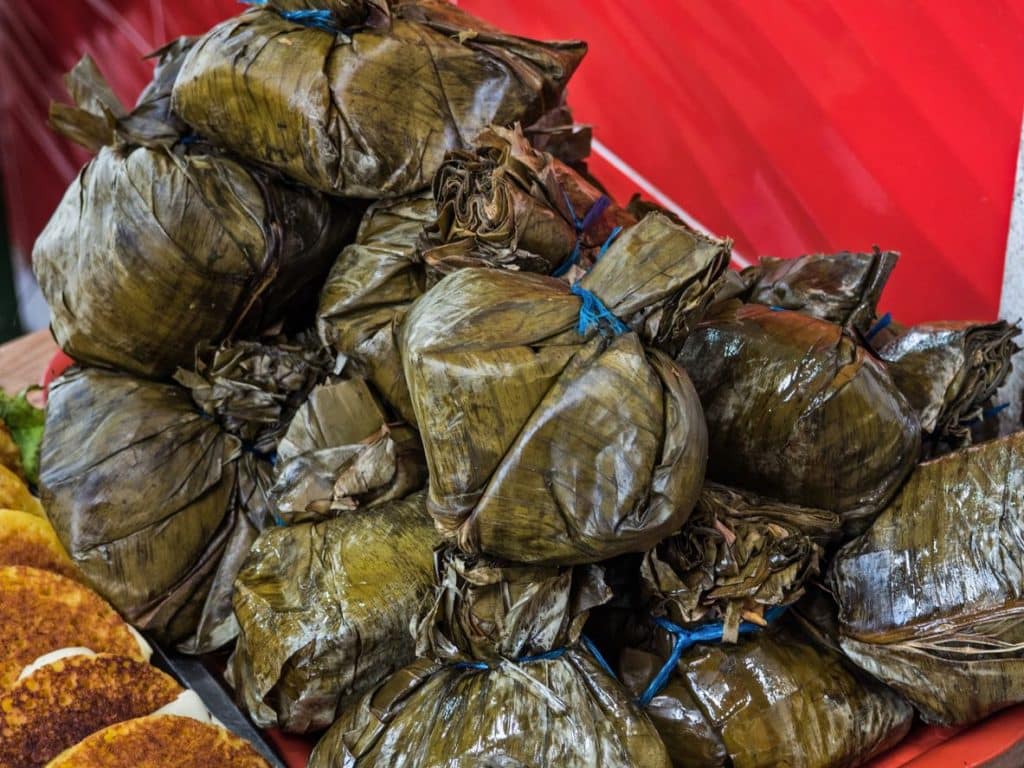
Hungry? Us Too—Let’s Make Tamales
Which tamale speaks to your family’s heritage or includes your favorite ingredients?
If tamales aren’t a tradition for your family, consider taking your celebración to the next level of authenticity by prepping and serving this time-honored, sacred dish Latinos and our ancestors have been preparing for millennia to honor our most special occasions.
First, choose your favorite from one of Familia Kitchen’s treasury of family-favorite recetas for tamales, humitas, hallacas, and pasteles, across Latino locales and in a range of relleno ingredients and wrappings.
Then, gather your family and friends into an assembly line of love and make your very own tamales.
Don’t see your favorite go-to tamale? We invite you to submit your family-famous recipe here and help us archive, celebrate and showcase our most important food traditions here at Familia Kitchen, the most authentic, complete and trusted community treasury of Latina comida for future generations of tamale makers!
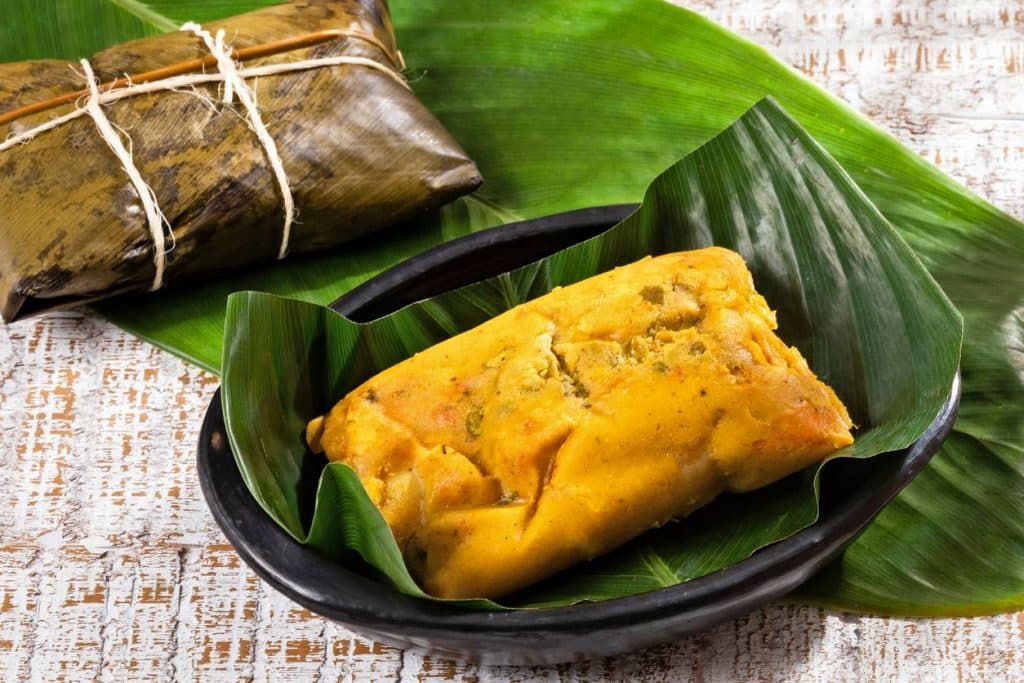
Like This

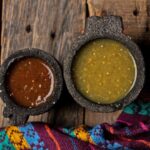
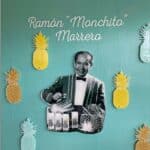


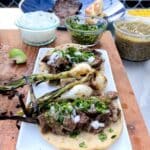
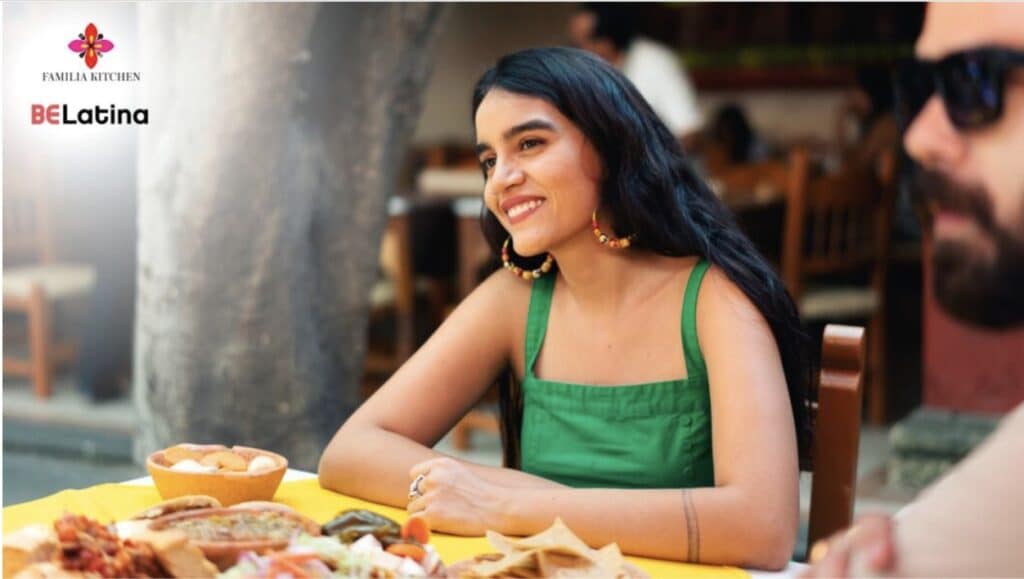
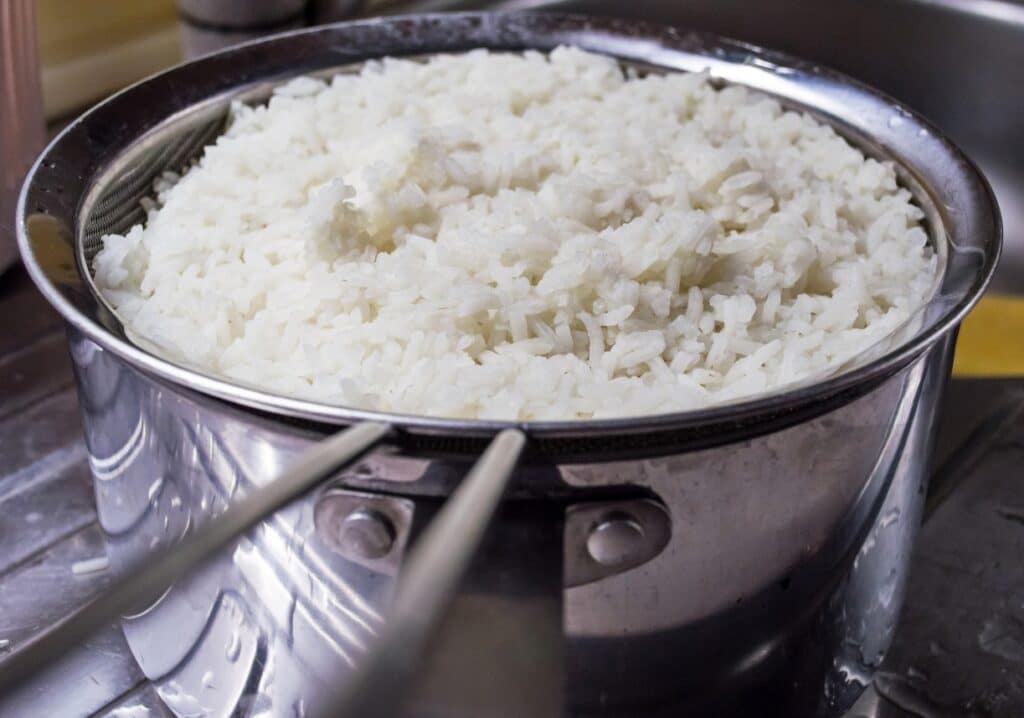

Got a question or suggestion?
Please rate this recipe and leave any tips, substitutions, or Qs you have!